Back to Page
Amazon
Is Amazon Competing Against You?
Is Amazon Competing Against You?
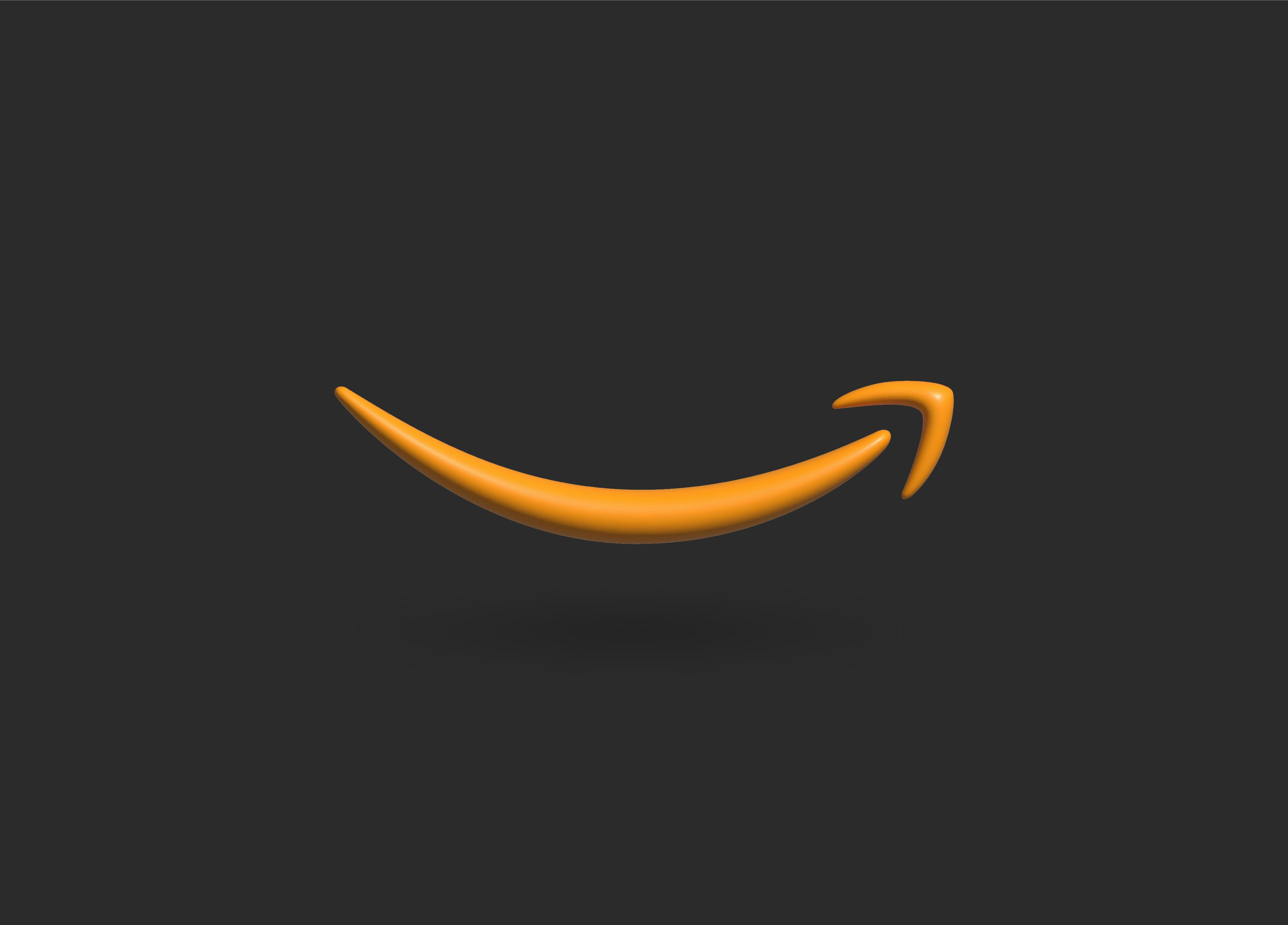

Back to Page
Amazon
Is Amazon Competing Against You?

Oct 15, 2019
Nobody sells on Amazon like Amazon. With its expansion into private label, Amazon has shifted from being may-the-best-product-win retail platform to a direct (and not to mention, the biggest) competition of the sellers. For sellers, it's been a love-hate relationship; they love Amazon for giving them a huge customer base and they hate Amazon for competing against them. Competing with Amazon - the thought itself is scary, but no one can do anything about it. What you can do is be aware of the situation and learn from it.

Why Is Amazon Mostly Everyone's Competitor?
AmazonBasics, the retail giant's private label brand sells everything from tech accessories and kitchen gadgets to bedding and toys. Launched in 2009, it has grown to be the biggest retail trend of 2019. The brand started by selling a small selection of batteries and charging cables at a 30% lower price than competitor brands and in just a few months it was outselling some of the huge brands in that category like Duracell.
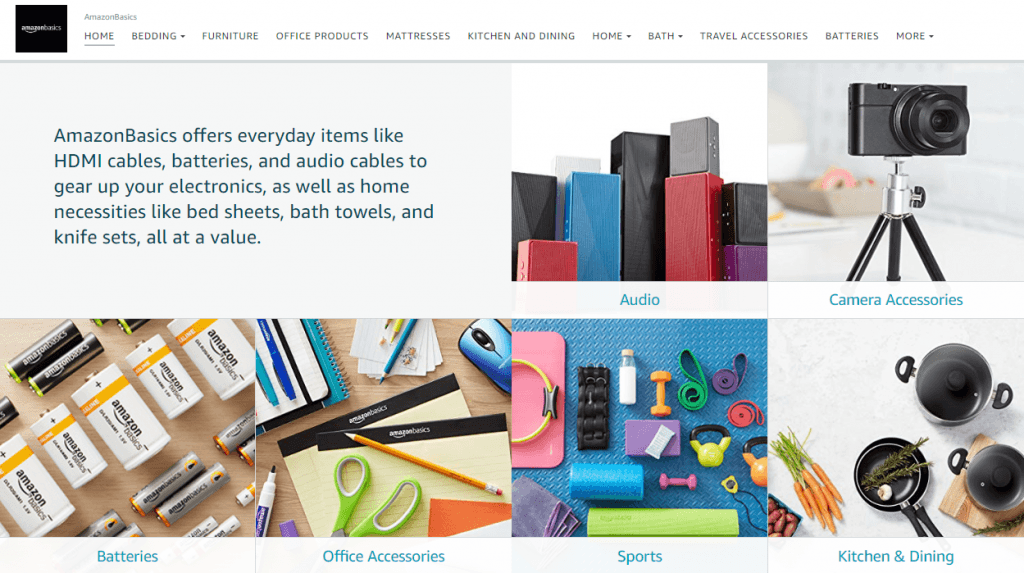
Though the batteries continue to be the top performers, the electronic departments also seem to be dominated by Amazon with products like Fire tablets, Fire TV, Alexa, and Echo devices. Today, Amazon Basics has listed more than 1000 individual products and most of them are ranking on page 1 with great reviews and ratings. If you are also selling in any of these categories (which most of us would be), then Amazon is your direct competitor.
Amazon Has Data No One Else Has:

Amazon's success is not simply about the brand. The detailed purchase data available to Amazon gives them an unfair advantage over the others. They can anticipate demand more accurately and by analyzing the click and purchase rates and they can make a more informed decision while launching new products. Amazon has access to all data, including:
What products customers search for
What termsdo they use for searching
What they buy
What do they but at what prices
Amazon Has A9, Obviously Their Products Will Rank!

I agree that selling on your platform is quite normal these days. If you go to a grocery store to buy detergent, let's say from Tide. I am pretty sure that you will see one detergent brand that is sold by the shop's owner himself. The huge online retailers like Walmart have also offered store brands for years. Yes, it is competition, but it cannot be called unfair. What is unfair is that Amazon's brand always seems to top the ranking and they always have the Buy Box. Multiple sellers usually compete in terms of price, review rating and shipping speed in order to get the sale, but most of Amazon's products always have the Buy Box.

When consumers ask Alexa to "buy batteries", they will get just one option: AmazonBasics. How is that possible? Also, if you type the word "batteries" in the Amazon search bar, you will see a large Sponsor Brand ad banner stretching across the top of the screen for Energizer featuring its signature drum-playing pink bunny. But then you will see a lot of offerings from AmazonBasics most of them flagged with highly coveted badges like "Amazon's Choice" or "Best Seller". It's no surprise that when Amazon launches a new product, it makes its way very quickly to the first page while other brands would take about a year to reach there and that also after optimizing the products, getting reviews, doing giveaways, and running aggressive PPC campaigns.
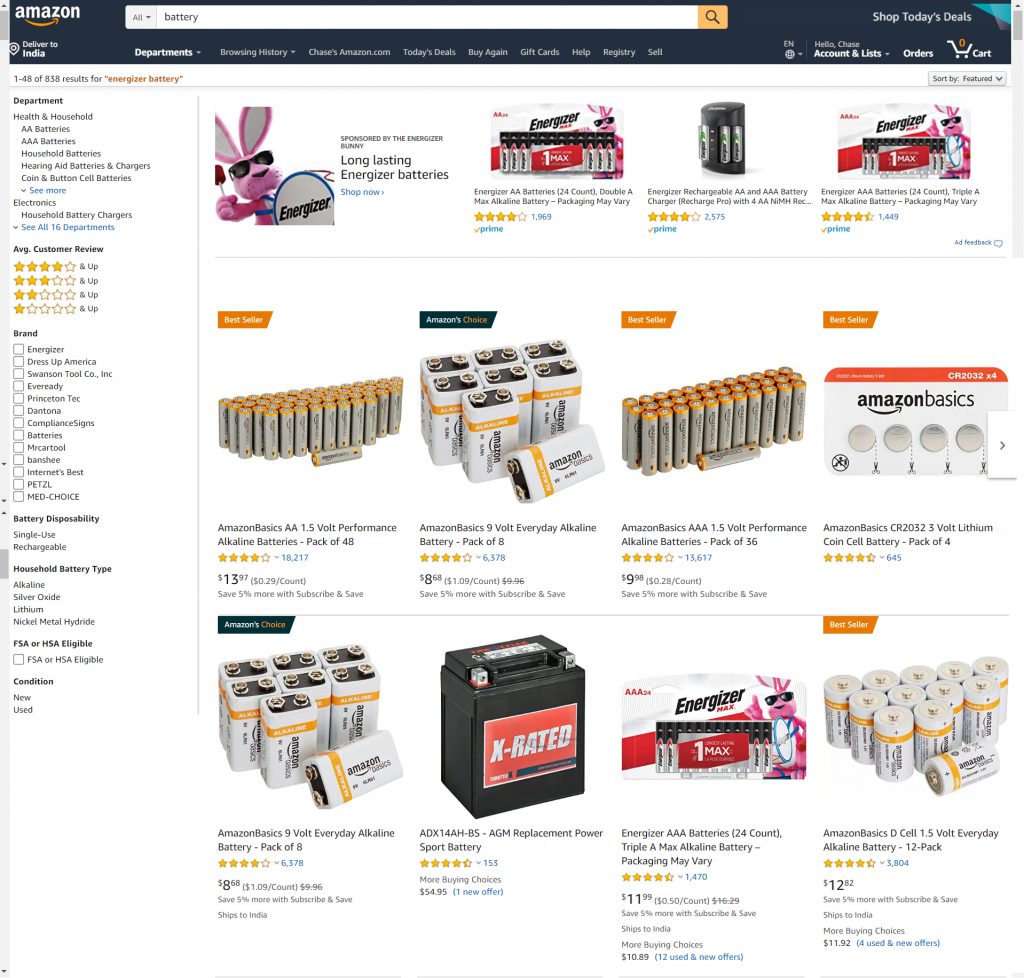
Is It A Tilted Playing Field?
There have been many cases where sellers saw a dip in sales because Amazon has listed a similar product in their category. Now, apart from other sellers, their competition is directly with Amazon. Amazon is also quite partial towards its listing. The lightning cable that Amazon sells has racked up dozens of complaints saying it's a fire hazard and yet was the "#1 Best Seller" in its category for the longest time. Now we all know, that just the word "fire" in one of our reviews would have got it blocked.
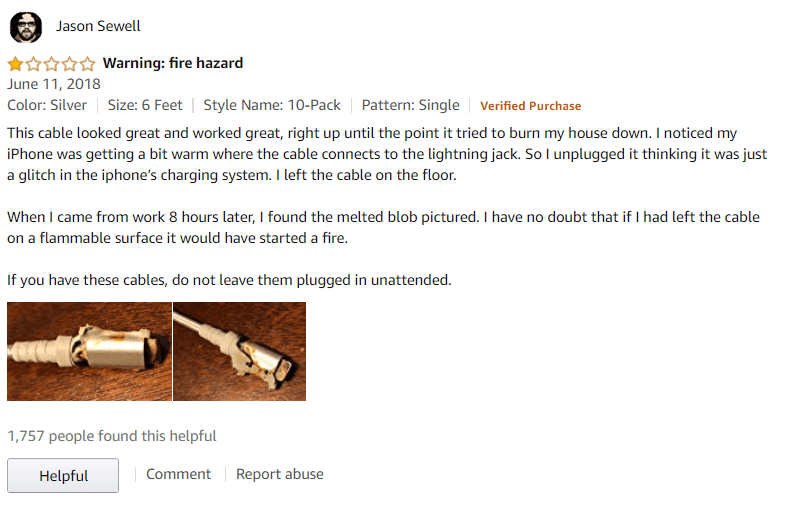
The competition isn't just limited to private label brands. Third-Party sellers also face competition when the retail giant sells the same or similar product at a low price. According to BuzzFeed News, Anthony Monfet, a successful Amazon seller who had three different storefronts on Amazon had to stop selling one of his highest selling commodities just because Amazon started selling a similar product for $80 less. Until 2008, he was selling 15 Coleman tents a day for $199.99 each, and then Amazon started offering the same Coleman tents for $119. Another company, Rain Design, saw a dip in the sale of its laptop stand just after Amazon began selling its version for half the price which was reported by Skubana in 2016. No one feels good about it, but there is nothing one can do.
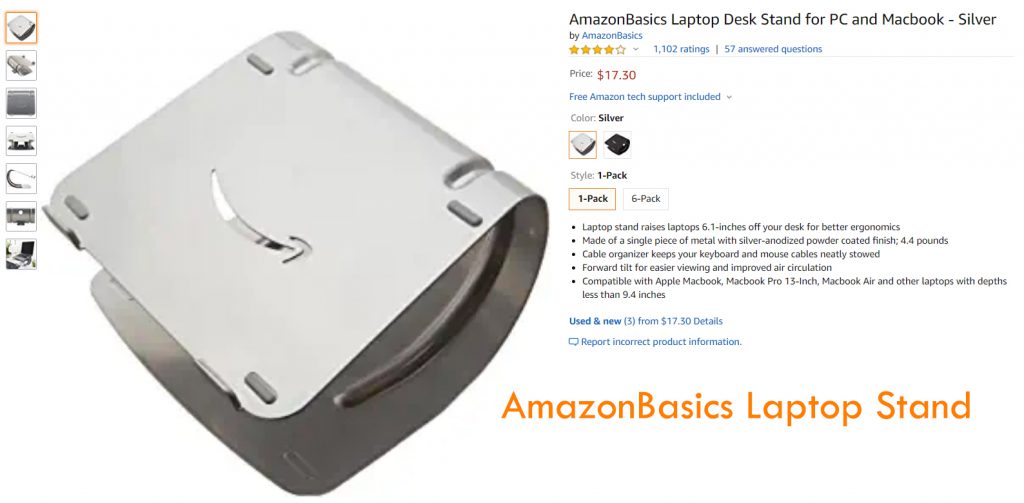


This is what Amazon does:
Recognize the Best Seller in the category
Copy its design and create a similar product
Cut the prices down
Bring the product on the first page next to best sellers
Take all their sales
Well, Amazon Has An Unfair Advantage Over Us All:
The question is how can Amazon lower its prices so much and still earn a profit? Well, unlike other sellers on the marketplace, Amazon isn't doing all this for profit, and it needs to make money from all the products it sells. The eCommerce behemoth already has robust cloud services to offset losses. It just wants its customers to come back and shop again.

Despite Being Competitive, Amazon Is A Great Teacher:

But if you can beat it, you can learn from it. Amazon has shown us how to be a profitable Amazon seller by doing business by its standards. As Amazon professionalized the selling game, we as sellers learned to take our customers seriously. We started to meet the delivery windows, listened to customer’s queries, and tried to match Amazon's performance. Amazon has increased the bar and forced us to do so. Here's what you can learn from Amazon:
#1: Take Your Reviews & Ratings Seriously
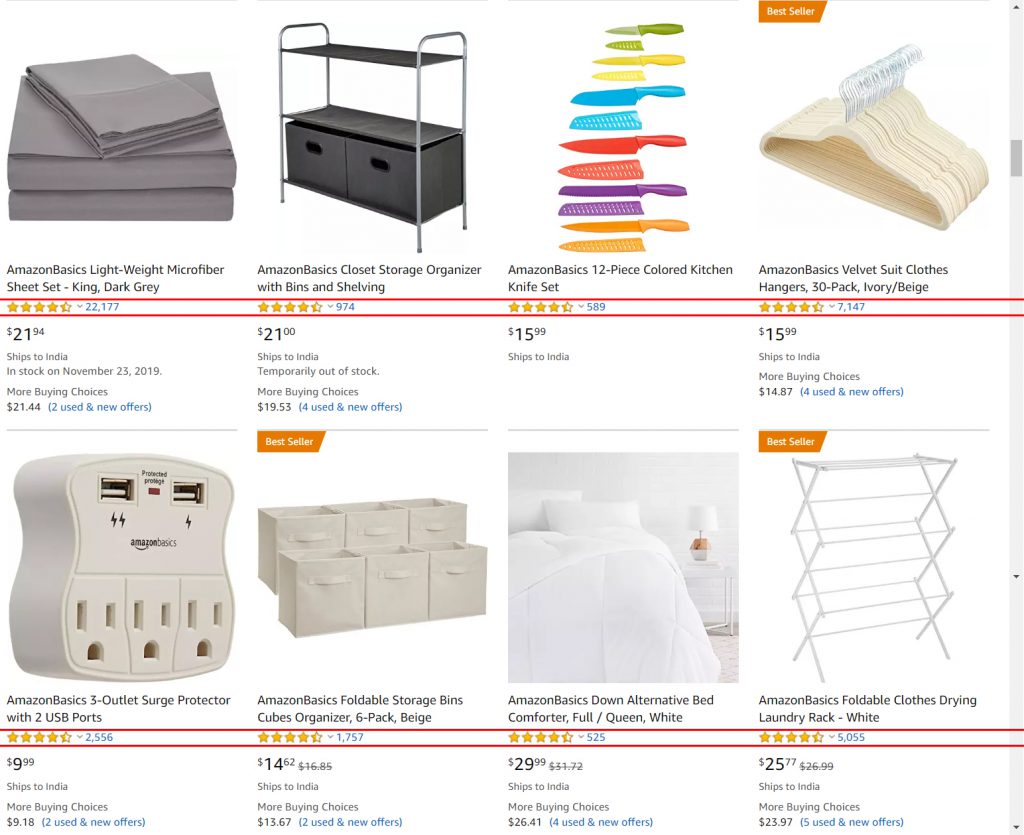
96% of AmazonBasics products have at least 1 review and have a rating between 3.5 to 5 stars. If your product does not have a review, it means that it lacks the social proof the customers need to make a purchase. The customer won't trust you or your product and hence, won't buy the product, no matter how beautiful your listing looks. I know this scenario is similar to "You need a job for experience and experience for the job." You need sales for reviews and reviews for sale. But several white hat tricks can help you out. You can also create a star review rating breakdown of your product's catalog. The products above 4.0-star ratings are perfect but you should focus on improving the review ratings of products lower than 4.0-star ratings. See the table below:

#2: Launch Products More Often, But Smartly
On average, Amazon launches 23 new products every month. The majority of these products are launched in Q1 and others are launched in Q2. Rarely does it happen that the product launched by Amazon does not work. It's not that it never happens, but the ratio is very low. There are two things you can learn from Amazon. First, launch more products to stay relevant in the market. I am not telling you to launch 23 products a month like Amazon, but you can introduce new products in the market according to the size and capacity of your business. Second, like Amazon, do proper homework before launching any product. Conduct thorough Amazon Product Research or hire Amazon experts like us to increase the probability of success.
#3: Price Competitively
The average price of Amazon's product is $22. Price can make or break your product. If your product is priced competitively, the chances of winning the Buy Box are also increased and you will have more chances of getting a sale from customers. Yes, Amazon can set a very reasonable price because they don't care about the profits, but if you want to sell on Amazon, you can't set a higher price than competitors saying your product is of great quality. That won't work.
#4: Delight Your Customers
Amazon is the most "customer-centric" company in the world and they offer world-class after-sale service and super fast shipping on their products. The warm-hug experience of excellent customer service will also help you build a fanatic fan base which will come back to you because they have developed a trust in your brand. Overdelivering to your customers will powerfully reshape your identity as a brand and will prevent them from going to Amazon.
#5: Revamp Your Listing
Most of Amazon's product listings have Enhanced Brand Content, keyword-rich titles, and informative bullet points. Amazon Basics has a beautiful storefront too. If you want to stand strong in front of Amazon, your listing should too. Optimize your listing with the best keywords, make it more and more information-rich, and add images and enhanced brand content to make it look enticing. An attractive main image can skyrocket your click-through rate and informative content can reduce the return ratio.
Don't Stress, There Is Space For Everyone To Coexist
As mentioned above, there is nothing wrong with selling on your platform; anyone would have done the same. Unless and until there is no injustice done to your listing everything is fair. And even if it is, all you can do is sit and watch; you are not going to court saying that you have added the best keywords in your listing and it's not ranking while Amazon's product is ranking with zero keywords in the title. That would be an utter waste of time. So it would be best if you learn from Amazon rather than sitting and crying. With the ever-growing customer base, Amazon has a place for everyone to sell, so don't worry, you have got plenty of opportunities. If you need any help to Boost Amazon Sales, then contact us.
Nobody sells on Amazon like Amazon. With its expansion into private label, Amazon has shifted from being may-the-best-product-win retail platform to a direct (and not to mention, the biggest) competition of the sellers. For sellers, it's been a love-hate relationship; they love Amazon for giving them a huge customer base and they hate Amazon for competing against them. Competing with Amazon - the thought itself is scary, but no one can do anything about it. What you can do is be aware of the situation and learn from it.

Why Is Amazon Mostly Everyone's Competitor?
AmazonBasics, the retail giant's private label brand sells everything from tech accessories and kitchen gadgets to bedding and toys. Launched in 2009, it has grown to be the biggest retail trend of 2019. The brand started by selling a small selection of batteries and charging cables at a 30% lower price than competitor brands and in just a few months it was outselling some of the huge brands in that category like Duracell.

Though the batteries continue to be the top performers, the electronic departments also seem to be dominated by Amazon with products like Fire tablets, Fire TV, Alexa, and Echo devices. Today, Amazon Basics has listed more than 1000 individual products and most of them are ranking on page 1 with great reviews and ratings. If you are also selling in any of these categories (which most of us would be), then Amazon is your direct competitor.
Amazon Has Data No One Else Has:

Amazon's success is not simply about the brand. The detailed purchase data available to Amazon gives them an unfair advantage over the others. They can anticipate demand more accurately and by analyzing the click and purchase rates and they can make a more informed decision while launching new products. Amazon has access to all data, including:
What products customers search for
What termsdo they use for searching
What they buy
What do they but at what prices
Amazon Has A9, Obviously Their Products Will Rank!

I agree that selling on your platform is quite normal these days. If you go to a grocery store to buy detergent, let's say from Tide. I am pretty sure that you will see one detergent brand that is sold by the shop's owner himself. The huge online retailers like Walmart have also offered store brands for years. Yes, it is competition, but it cannot be called unfair. What is unfair is that Amazon's brand always seems to top the ranking and they always have the Buy Box. Multiple sellers usually compete in terms of price, review rating and shipping speed in order to get the sale, but most of Amazon's products always have the Buy Box.

When consumers ask Alexa to "buy batteries", they will get just one option: AmazonBasics. How is that possible? Also, if you type the word "batteries" in the Amazon search bar, you will see a large Sponsor Brand ad banner stretching across the top of the screen for Energizer featuring its signature drum-playing pink bunny. But then you will see a lot of offerings from AmazonBasics most of them flagged with highly coveted badges like "Amazon's Choice" or "Best Seller". It's no surprise that when Amazon launches a new product, it makes its way very quickly to the first page while other brands would take about a year to reach there and that also after optimizing the products, getting reviews, doing giveaways, and running aggressive PPC campaigns.

Is It A Tilted Playing Field?
There have been many cases where sellers saw a dip in sales because Amazon has listed a similar product in their category. Now, apart from other sellers, their competition is directly with Amazon. Amazon is also quite partial towards its listing. The lightning cable that Amazon sells has racked up dozens of complaints saying it's a fire hazard and yet was the "#1 Best Seller" in its category for the longest time. Now we all know, that just the word "fire" in one of our reviews would have got it blocked.

The competition isn't just limited to private label brands. Third-Party sellers also face competition when the retail giant sells the same or similar product at a low price. According to BuzzFeed News, Anthony Monfet, a successful Amazon seller who had three different storefronts on Amazon had to stop selling one of his highest selling commodities just because Amazon started selling a similar product for $80 less. Until 2008, he was selling 15 Coleman tents a day for $199.99 each, and then Amazon started offering the same Coleman tents for $119. Another company, Rain Design, saw a dip in the sale of its laptop stand just after Amazon began selling its version for half the price which was reported by Skubana in 2016. No one feels good about it, but there is nothing one can do.



This is what Amazon does:
Recognize the Best Seller in the category
Copy its design and create a similar product
Cut the prices down
Bring the product on the first page next to best sellers
Take all their sales
Well, Amazon Has An Unfair Advantage Over Us All:
The question is how can Amazon lower its prices so much and still earn a profit? Well, unlike other sellers on the marketplace, Amazon isn't doing all this for profit, and it needs to make money from all the products it sells. The eCommerce behemoth already has robust cloud services to offset losses. It just wants its customers to come back and shop again.

Despite Being Competitive, Amazon Is A Great Teacher:

But if you can beat it, you can learn from it. Amazon has shown us how to be a profitable Amazon seller by doing business by its standards. As Amazon professionalized the selling game, we as sellers learned to take our customers seriously. We started to meet the delivery windows, listened to customer’s queries, and tried to match Amazon's performance. Amazon has increased the bar and forced us to do so. Here's what you can learn from Amazon:
#1: Take Your Reviews & Ratings Seriously

96% of AmazonBasics products have at least 1 review and have a rating between 3.5 to 5 stars. If your product does not have a review, it means that it lacks the social proof the customers need to make a purchase. The customer won't trust you or your product and hence, won't buy the product, no matter how beautiful your listing looks. I know this scenario is similar to "You need a job for experience and experience for the job." You need sales for reviews and reviews for sale. But several white hat tricks can help you out. You can also create a star review rating breakdown of your product's catalog. The products above 4.0-star ratings are perfect but you should focus on improving the review ratings of products lower than 4.0-star ratings. See the table below:

#2: Launch Products More Often, But Smartly
On average, Amazon launches 23 new products every month. The majority of these products are launched in Q1 and others are launched in Q2. Rarely does it happen that the product launched by Amazon does not work. It's not that it never happens, but the ratio is very low. There are two things you can learn from Amazon. First, launch more products to stay relevant in the market. I am not telling you to launch 23 products a month like Amazon, but you can introduce new products in the market according to the size and capacity of your business. Second, like Amazon, do proper homework before launching any product. Conduct thorough Amazon Product Research or hire Amazon experts like us to increase the probability of success.
#3: Price Competitively
The average price of Amazon's product is $22. Price can make or break your product. If your product is priced competitively, the chances of winning the Buy Box are also increased and you will have more chances of getting a sale from customers. Yes, Amazon can set a very reasonable price because they don't care about the profits, but if you want to sell on Amazon, you can't set a higher price than competitors saying your product is of great quality. That won't work.
#4: Delight Your Customers
Amazon is the most "customer-centric" company in the world and they offer world-class after-sale service and super fast shipping on their products. The warm-hug experience of excellent customer service will also help you build a fanatic fan base which will come back to you because they have developed a trust in your brand. Overdelivering to your customers will powerfully reshape your identity as a brand and will prevent them from going to Amazon.
#5: Revamp Your Listing
Most of Amazon's product listings have Enhanced Brand Content, keyword-rich titles, and informative bullet points. Amazon Basics has a beautiful storefront too. If you want to stand strong in front of Amazon, your listing should too. Optimize your listing with the best keywords, make it more and more information-rich, and add images and enhanced brand content to make it look enticing. An attractive main image can skyrocket your click-through rate and informative content can reduce the return ratio.
Don't Stress, There Is Space For Everyone To Coexist
As mentioned above, there is nothing wrong with selling on your platform; anyone would have done the same. Unless and until there is no injustice done to your listing everything is fair. And even if it is, all you can do is sit and watch; you are not going to court saying that you have added the best keywords in your listing and it's not ranking while Amazon's product is ranking with zero keywords in the title. That would be an utter waste of time. So it would be best if you learn from Amazon rather than sitting and crying. With the ever-growing customer base, Amazon has a place for everyone to sell, so don't worry, you have got plenty of opportunities. If you need any help to Boost Amazon Sales, then contact us.
Nobody sells on Amazon like Amazon. With its expansion into private label, Amazon has shifted from being may-the-best-product-win retail platform to a direct (and not to mention, the biggest) competition of the sellers. For sellers, it's been a love-hate relationship; they love Amazon for giving them a huge customer base and they hate Amazon for competing against them. Competing with Amazon - the thought itself is scary, but no one can do anything about it. What you can do is be aware of the situation and learn from it.

Why Is Amazon Mostly Everyone's Competitor?
AmazonBasics, the retail giant's private label brand sells everything from tech accessories and kitchen gadgets to bedding and toys. Launched in 2009, it has grown to be the biggest retail trend of 2019. The brand started by selling a small selection of batteries and charging cables at a 30% lower price than competitor brands and in just a few months it was outselling some of the huge brands in that category like Duracell.

Though the batteries continue to be the top performers, the electronic departments also seem to be dominated by Amazon with products like Fire tablets, Fire TV, Alexa, and Echo devices. Today, Amazon Basics has listed more than 1000 individual products and most of them are ranking on page 1 with great reviews and ratings. If you are also selling in any of these categories (which most of us would be), then Amazon is your direct competitor.
Amazon Has Data No One Else Has:

Amazon's success is not simply about the brand. The detailed purchase data available to Amazon gives them an unfair advantage over the others. They can anticipate demand more accurately and by analyzing the click and purchase rates and they can make a more informed decision while launching new products. Amazon has access to all data, including:
What products customers search for
What termsdo they use for searching
What they buy
What do they but at what prices
Amazon Has A9, Obviously Their Products Will Rank!

I agree that selling on your platform is quite normal these days. If you go to a grocery store to buy detergent, let's say from Tide. I am pretty sure that you will see one detergent brand that is sold by the shop's owner himself. The huge online retailers like Walmart have also offered store brands for years. Yes, it is competition, but it cannot be called unfair. What is unfair is that Amazon's brand always seems to top the ranking and they always have the Buy Box. Multiple sellers usually compete in terms of price, review rating and shipping speed in order to get the sale, but most of Amazon's products always have the Buy Box.

When consumers ask Alexa to "buy batteries", they will get just one option: AmazonBasics. How is that possible? Also, if you type the word "batteries" in the Amazon search bar, you will see a large Sponsor Brand ad banner stretching across the top of the screen for Energizer featuring its signature drum-playing pink bunny. But then you will see a lot of offerings from AmazonBasics most of them flagged with highly coveted badges like "Amazon's Choice" or "Best Seller". It's no surprise that when Amazon launches a new product, it makes its way very quickly to the first page while other brands would take about a year to reach there and that also after optimizing the products, getting reviews, doing giveaways, and running aggressive PPC campaigns.

Is It A Tilted Playing Field?
There have been many cases where sellers saw a dip in sales because Amazon has listed a similar product in their category. Now, apart from other sellers, their competition is directly with Amazon. Amazon is also quite partial towards its listing. The lightning cable that Amazon sells has racked up dozens of complaints saying it's a fire hazard and yet was the "#1 Best Seller" in its category for the longest time. Now we all know, that just the word "fire" in one of our reviews would have got it blocked.

The competition isn't just limited to private label brands. Third-Party sellers also face competition when the retail giant sells the same or similar product at a low price. According to BuzzFeed News, Anthony Monfet, a successful Amazon seller who had three different storefronts on Amazon had to stop selling one of his highest selling commodities just because Amazon started selling a similar product for $80 less. Until 2008, he was selling 15 Coleman tents a day for $199.99 each, and then Amazon started offering the same Coleman tents for $119. Another company, Rain Design, saw a dip in the sale of its laptop stand just after Amazon began selling its version for half the price which was reported by Skubana in 2016. No one feels good about it, but there is nothing one can do.



This is what Amazon does:
Recognize the Best Seller in the category
Copy its design and create a similar product
Cut the prices down
Bring the product on the first page next to best sellers
Take all their sales
Well, Amazon Has An Unfair Advantage Over Us All:
The question is how can Amazon lower its prices so much and still earn a profit? Well, unlike other sellers on the marketplace, Amazon isn't doing all this for profit, and it needs to make money from all the products it sells. The eCommerce behemoth already has robust cloud services to offset losses. It just wants its customers to come back and shop again.

Despite Being Competitive, Amazon Is A Great Teacher:

But if you can beat it, you can learn from it. Amazon has shown us how to be a profitable Amazon seller by doing business by its standards. As Amazon professionalized the selling game, we as sellers learned to take our customers seriously. We started to meet the delivery windows, listened to customer’s queries, and tried to match Amazon's performance. Amazon has increased the bar and forced us to do so. Here's what you can learn from Amazon:
#1: Take Your Reviews & Ratings Seriously

96% of AmazonBasics products have at least 1 review and have a rating between 3.5 to 5 stars. If your product does not have a review, it means that it lacks the social proof the customers need to make a purchase. The customer won't trust you or your product and hence, won't buy the product, no matter how beautiful your listing looks. I know this scenario is similar to "You need a job for experience and experience for the job." You need sales for reviews and reviews for sale. But several white hat tricks can help you out. You can also create a star review rating breakdown of your product's catalog. The products above 4.0-star ratings are perfect but you should focus on improving the review ratings of products lower than 4.0-star ratings. See the table below:

#2: Launch Products More Often, But Smartly
On average, Amazon launches 23 new products every month. The majority of these products are launched in Q1 and others are launched in Q2. Rarely does it happen that the product launched by Amazon does not work. It's not that it never happens, but the ratio is very low. There are two things you can learn from Amazon. First, launch more products to stay relevant in the market. I am not telling you to launch 23 products a month like Amazon, but you can introduce new products in the market according to the size and capacity of your business. Second, like Amazon, do proper homework before launching any product. Conduct thorough Amazon Product Research or hire Amazon experts like us to increase the probability of success.
#3: Price Competitively
The average price of Amazon's product is $22. Price can make or break your product. If your product is priced competitively, the chances of winning the Buy Box are also increased and you will have more chances of getting a sale from customers. Yes, Amazon can set a very reasonable price because they don't care about the profits, but if you want to sell on Amazon, you can't set a higher price than competitors saying your product is of great quality. That won't work.
#4: Delight Your Customers
Amazon is the most "customer-centric" company in the world and they offer world-class after-sale service and super fast shipping on their products. The warm-hug experience of excellent customer service will also help you build a fanatic fan base which will come back to you because they have developed a trust in your brand. Overdelivering to your customers will powerfully reshape your identity as a brand and will prevent them from going to Amazon.
#5: Revamp Your Listing
Most of Amazon's product listings have Enhanced Brand Content, keyword-rich titles, and informative bullet points. Amazon Basics has a beautiful storefront too. If you want to stand strong in front of Amazon, your listing should too. Optimize your listing with the best keywords, make it more and more information-rich, and add images and enhanced brand content to make it look enticing. An attractive main image can skyrocket your click-through rate and informative content can reduce the return ratio.
Don't Stress, There Is Space For Everyone To Coexist
As mentioned above, there is nothing wrong with selling on your platform; anyone would have done the same. Unless and until there is no injustice done to your listing everything is fair. And even if it is, all you can do is sit and watch; you are not going to court saying that you have added the best keywords in your listing and it's not ranking while Amazon's product is ranking with zero keywords in the title. That would be an utter waste of time. So it would be best if you learn from Amazon rather than sitting and crying. With the ever-growing customer base, Amazon has a place for everyone to sell, so don't worry, you have got plenty of opportunities. If you need any help to Boost Amazon Sales, then contact us.









